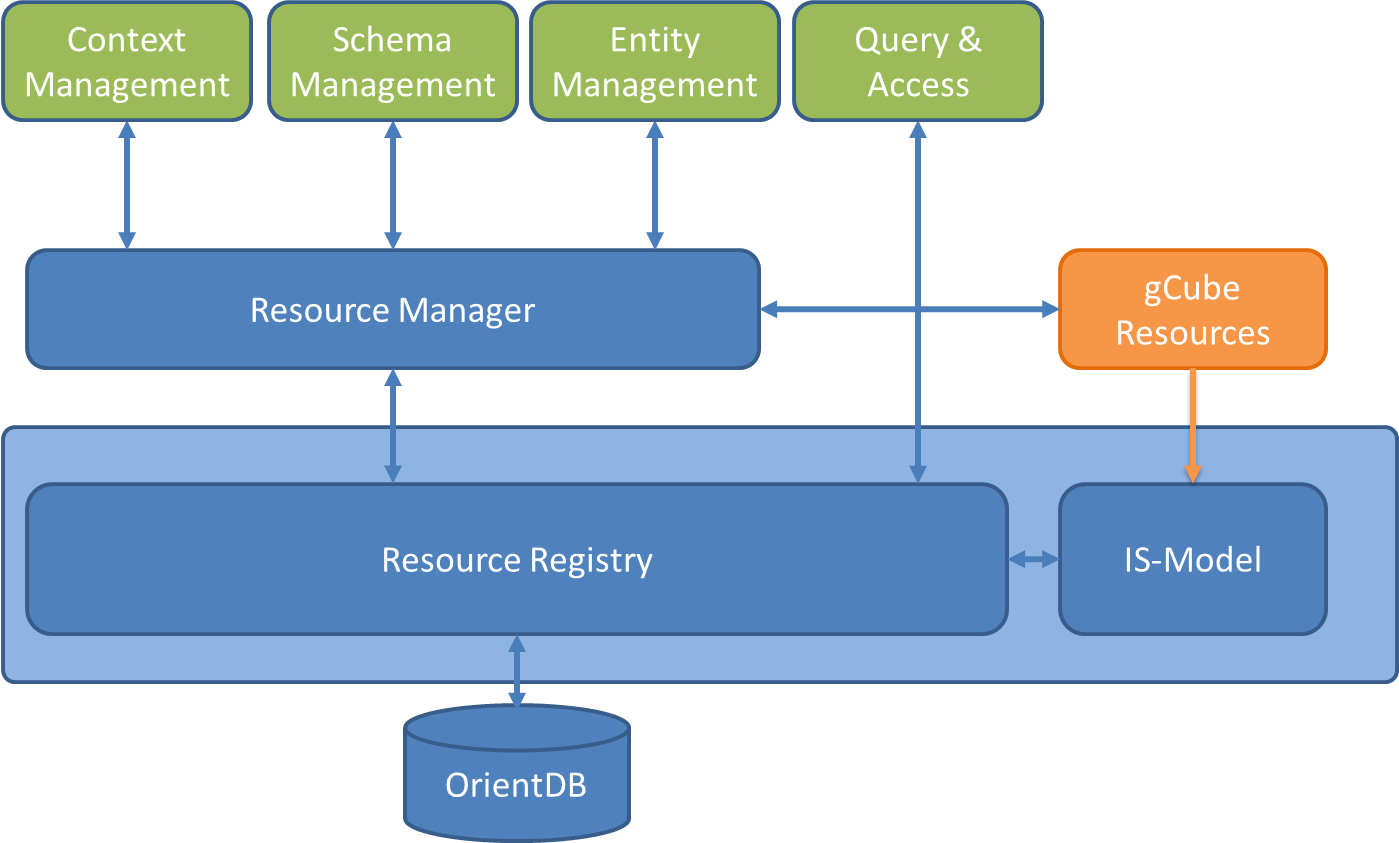Information System
The gCube Information System (IS) has been designed to support Research Infrastructure federation.
Contents
Definition
Several definitions of Information System (henceforth IS) exist. Each definition aims to capture either a specific role or a specific behavior in systems managing some kind of information.
It is quite common to define an IS as "any organized system for the collection, organization, storage and communication of information".
The Encyclopaedia Britannica defines an IS as "an integrated set of components for collecting, storing, and processing data and for providing information, knowledge, and digital products".
All the definitions convey on the characteristics of Information. Information consists of data that:
- is accurate and timely,
- is specific and organized for a purpose,
- is presented within a context that gives it meaning and relevance,
- can increase understanding and decrease uncertainty
According to the Business Dictionary, an IS is "a combination of hardware, software, infrastructure and trained personnel organized to facilitate planning, control, coordination, and decision making in an organization" In this context, trained personnel consists of
- human resources
- procedures for using, operating, and maintaining the information system
- set of basic principles and associated guidelines, a.k.a policies, formulated and enforced to direct and limit actions in pursuit of long-term goals.
Looking at the MIT Press, an IS is "a software system to capture, transmit, store, retrieve, and manipulate data produced by software systems to provide access to information, thereby supporting people, organizations, or other software systems". This definition makes evident that software systems become producer and consumer of the Information System making it at the core of their business activities.
In the context of the research infrastructures [1] and the system of systems, we can define an information system (IS) as:
A software system
- to capture, transmit, store, retrieve, and manipulate data produced by software systems
- to provide access to information, organized for a purpose and within a contextual domain
- used, accessed, and maintained according to well-known procedures operated under the limit of the (evolving) organization policies
- to support people within an organization and other software systems
Requirements
Functional Requirements
- Data Definition Language (DDL) for schemas definition (entities and relations);
- Entity and Relation instances must be:
- Univocally identifiable;
- Selective/Partial updatable;
- Validated against the Schema.
- Referential Integrity;
- Dynamic Query (no pre-define query);
- Standard Abstraction (desiderata);
- Subscription Notification Support.
Non-Functional Requirements
- High Availability (HA);
- Eventual Consistency;
- Horizontal Scalability;
- Multi-Tenancy, i.e. a single instance of the technology should be able to serve many “independent” contexts (between the same Application Domain) [2];
- EUPL licence compatibility of all its components.
Architecture
The constituent components are:
- Facet Based Resource Model
- Information System Resource Registry
- Backend Database (i.e. OrientDB as Graph Database)
- Information System Subscription Notification Service
Notes
- ↑ The term ‘research infrastructures’ refers to facilities, resources and related services used by the scientific community to conduct top-level research in their respective fields, ranging from social sciences to astronomy, genomics to nanotechnologies https://ec.europa.eu/research/infrastructures/index_en.cfm?pg=about
- ↑ Please note that different Application domain must be managed by completely separated instances of the whole IS.
